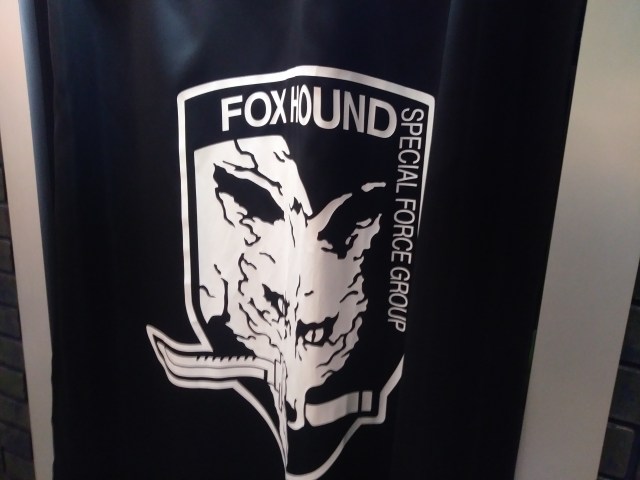
11 things to know before playing the English-friendly real-life version of the hit video game.
Recently, a friend of mine from Los Angeles came to Japan on vacation. While he was here, we did the standard tourist stuff, like checking out the Shibuya Scramble intersection and eating sushi at the world-famous Tsukiji Fish Market.
Oh, and we also destroyed Metal Gear.
Earlier this month, Tokyo Mystery Circus, a facility which hosts a number of real escape and mystery experience attractions, announced that it was opening a “real infiltration” game based on the Metal Gear Solid video game franchise. Metal Gear’s defining characteristic has always been its stealth element, and the real-life Metal Gear game is like an awesome version of hide-and-seek for grown-ups.
But how do you take one of the most immersive video games of all time and turn it into something people can play in real life? Let’s take a look at some questions you might have.
1. Is the Metal Gear Real Infiltration Game worth playing?
Yes. Absolutely yes. If you’re already a fan of the franchise, I’d say it’s a must, and even if you’ve never played any of the video games before, it’s still an unforgettable and incredibly enjoyable experience.
2. Do I need to be able to speak or read Japanese?
Not at all. While the staff give a verbal explanation of how to play the game in Japanese, the same information is also covered in English via printed cards and subtitled video. During the game, you’ll be using a Codec (tablet) to navigate the base and gather information, but all of that can be set to English as well.
There are parts of the game where you’ll have to speak to guards or agents, but a simple grunt of “Card!” or “Disc!” will get your point across, since the words are pretty much the same (kaado/disuku) in Japanese.
3. So how do you actually play Metal Gear in the real world?
Before you start, you’re given a Codec and sneaking suit (vest). Along with a screen, the Codec has a scanner, which you use to unlock doors, hack computers, and gather information while sneaking through the base, which is a complex of seven connected rooms. The Codec also contains a map and information on your next objective, since the game has multiple plot twists to keep you on your toes.
As for the sneaking suit, it’s really more of a target. The base, obviously, is guarded and booby-trapped. If a human guard sees you, he’ll open fire (using a light gun; no actual projectiles get flung around the area), and if you get hit, you’ll lose some of your play time. Once you run out of time, it’s game over (though there’s an option to continue). However, there are also ration cans hidden around the base, and if you spot one, then scan it with your Codec, your play time will be extended.
Once you enter the base from the staging area, you’ll find yourself in a central hall ringed by locked doors, and it’s up to you to gain entrance by obtaining their access codes and punching them into their touch activated lock panels, hacking the system, or otherwise convincing whoever is on the other side to let you in.
Completing the mission requires you to visit each room, which means you’ll make multiple passes through the central hall. However, you’re always moving through it in a different direction than you did before, keeping the challenge of avoiding detection fresh and filled with tension.
4. OK, so the spy element is there. What about stealth?
The central hall is filled with crates, oil drums, and other military paraphernalia. Most of it is chest-high, meaning you’ll have to stay low to the ground, dashing from one source of cover to another to keep out of the human guard’s line of sight, and there was one area I was only able to make it through by literally pressing my body flat against the floor and inching forward.
There are also multiple lockers to hide in and, because this is Metal Gear, you’ll also come across the series’ greatest stealth gadget: a cardboard box with “The Orange” written in jumbo-sized font, which just might keep you safe.
5. How’s the acting by the staff/NPCs?
Surprisingly good. The guard trying to hunt us down sounded legitimately menacing as he snarled “Who’s there?!?” and slammed on the exterior door of the bank of lockers I was hiding in, while I looked out through the slits in the door and prayed he wouldn’t yank it open. He also seemed genuinely angry when he kicked over the box my friend was hiding under and opened fire, peppering him with time-draining rounds as I stayed undetected but filled with adrenaline in my own cardboard fortress.
During the mission, you’ll also coordinate with an allied agent (who indulges in Metal Gear’s time-honored tradition of looking at photos of sexy swimsuit models in his downtime), and his actor was also convincingly committed to his role in this world of espionage.
6. Should I play alone, or as part of a team?
The Metal Gear Real Infiltration Game can be played entirely solo, or in a team of two or three players. However, you won’t be matched up with other strangers at the venue. Instead, if you and friends make your reservation as a group, you’ll play as a team.
The upside to playing by yourself is complete freedom of movement. As mentioned above, you use the Codec to obtain information and open doors, but each team only has one Codec, so if you and your friends are playing as a team, you’ll have to stay in the same room, and move on to the next area in unison (think of it like playing a local co-op video game without any split-screen mode). Also, both solo players and teams get the same starting time of 15 minutes, but that time is shared among all members of the team, meaning that if one of you gets shot, essentially the whole team gets shot.
On the other hand, playing as a team gives you multiple sets of eyes. You’re constantly having to track guard movements, search for objective points, and keep an eye out for traps and security cameras, and there were plenty of times where my friend stopped me from running straight into the sentry, or I noticed a ration canister for him to scan (since he was holding the Codec).
That might make it sound like the best thing to do would be for you and a friend to both buy solo tickets for the same time block, since multiple teams can play at the same time. However, playing as a team gets you a large per-person ticket discount (solo tickets are 3,800 yen, while pair tickets are 4,800 yen and trio tickets are 6,300 yen). There’s also the fact that each team or solo player’s entry to the base is staggered by a few minutes, meaning that two solo players’ objectives won’t synch time-wise, and there’s also at least one obstacle with a solution that’s unique to each team.
7. How fair is the game?
Honestly, the difficulty felt just about right. Similar to the Metal Gear Solid video games, the guard’s peripheral vision isn’t the best, but staying out of his line of sight is a fun challenge, especially when he’s less than a foot away from you as you squat behind a crate. The game is also pretty generous with rations. There are a total of 10 in the complex, and we managed to find seven of them (each can be scanned only once), which helped ease the sting of getting shot by giving us an extra three minutes each.
As mentioned above, you have the option to continue if you run out of time (you make your choice via the Codec, and all players on the team must collectively choose to continue or not). My friend and I ended up needing to continue three times in order to get the best ending, though we probably could have done it in two if I hadn’t hit one too many tripwires. Each continue fills you up with another 10 minutes of play time (which, once again, can be extended or shortened through rations and gunfire) at a cost of 800 yen per person, and our cost to destroy Metal Gear and save the world worked out to 4,800 yen (US$43) per person. Our total play time inside the base was just over 39 minutes, which doesn’t include the pre-game briefing or post-game ending/debriefing/ranking.
8. Does the experience feel like Metal Gear?
Definitely. The play area has musical cues from the game, including the franchise’s famous piece of music that plays when guards are in alert mode. The Codec’s font, aesthetics, and character artwork are all evocative of the first Metal Gear Solid game, with Otacon guiding you through the mission. Once you’re done, you’re given an animal code name based on your performance (though you’re left to choose your own prefacing adjective).
▼ My card with “Hound” and “Rabbit” code names. Getting “Big Boss” requires beating the game with the best ending, no continues, and without getting shot even once, something only three teams have done so far.
9. Can I take pictures during the game?
Sadly, no. Photography is not allowed inside the play area, and there are free-to-use lockers where players are asked to stow their belongings before they begin their mission.
However, you can take pictures in the staging area, which includes a photo corner with Metal Gear’s iconic icons: the excalamation point and question mark.
Photo: Marcus Lai
10. This is Japan, so there’s gotta be some cool merch available, right?
Right you are. The first floor of Tokyo Mystery Circus houses a gift shop with all sorts of trinkets from their currently running attractions.
There isn’t a ton of Metal Gear stuff, but there are exclamation point clear files (which are largely clear, so that you can hold them above you head when snapping photos), as well as stickers and acrylic character keychains of series star Snake. The most tempting item, though, is the palm-sized replica cardboard box.
▼ Not just any orange, but the orange.
11. Okay, anything else I should keep in mind?
The very first game in the Metal Gear Solid arc was released back in 1998, and the Metal Gear franchise as a whole has roots that go all the way back to 1987. If you’re old enough that you can remember playing the early Metal Gear games when they were new, you might not be quite as limber as you were back in the days of your first tactical espionage operations.
Like I said, our playthrough of the Metal Gear Real Infiltration Game took about 40 minutes, and we spent the vast majority of that squatting behind cover and crouch-dashing from one hiding place to another. In hindsight, some light stretching beforehand would have been a very good idea, and saved us a lot of soreness afterwards.
I’d also recommend wearing pants with reasonably thick knees, since the floor of the base is primarily hard concrete.
▼ The price of victory
Tokyo Mystery Circus is a short walk from Tokyo’s Shinjuku Station, and The Metal Gear Real Infiltration Game is currently scheduled to run through December 31. Reservations can be made online (in English) here.
Venue information
Tokyo Mystery Circus / 東京ミステリーサーカス
Address: Tokyo-to, Shinjuku-ku, Kabukicho 1-27-5, APM Building
東京都新宿区歌舞伎町1-27-5 APMビル
Website
Top image: SoraNews24
Insert images: SoraNews24, YouTube/TOKYO MYSTERY CIRCUS / 東京ミステリーサーカス, Marcus Lai
Follow Casey on Twitter, and if he isn’t posting anything, just assume he’s hiding in a cardboard box somewhere in your house.

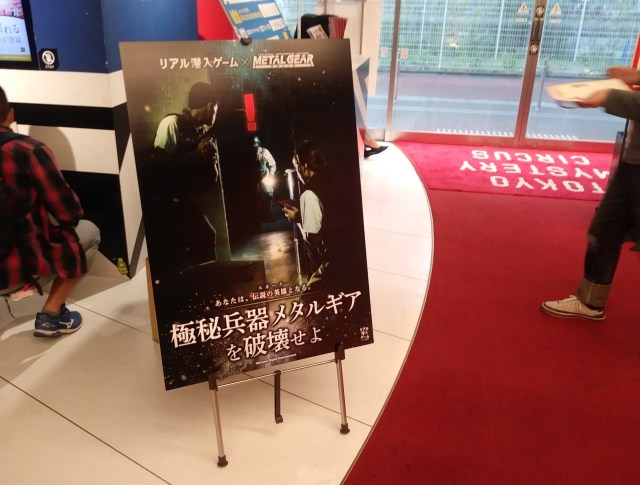
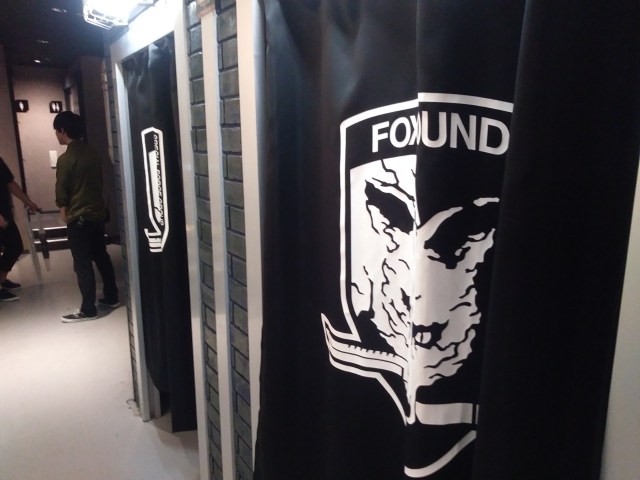
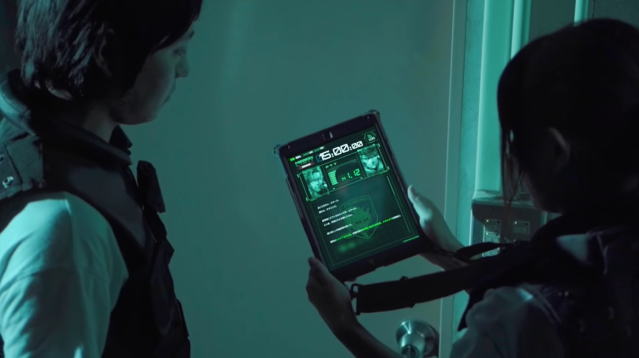
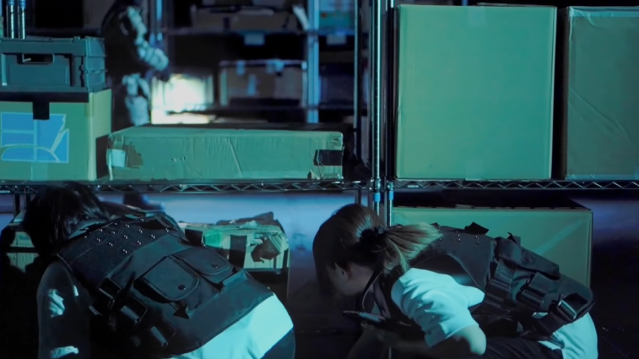
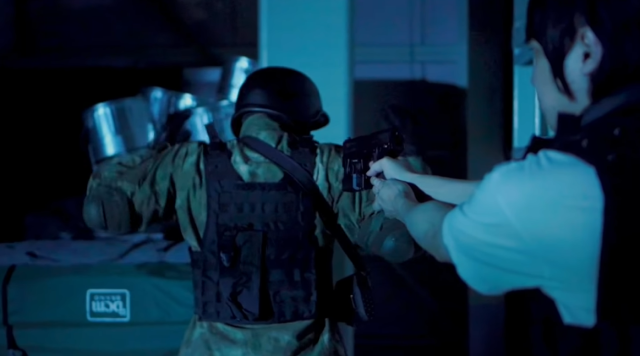
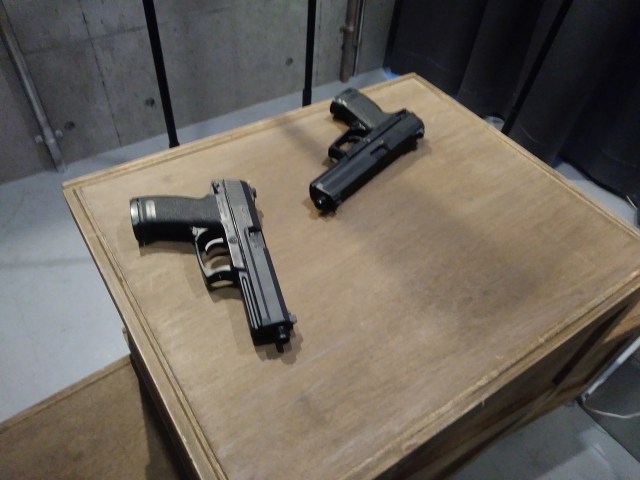
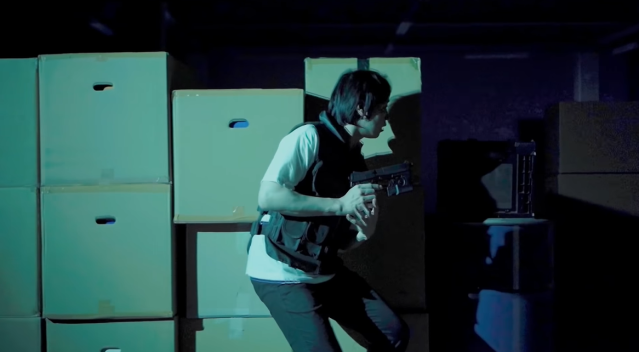
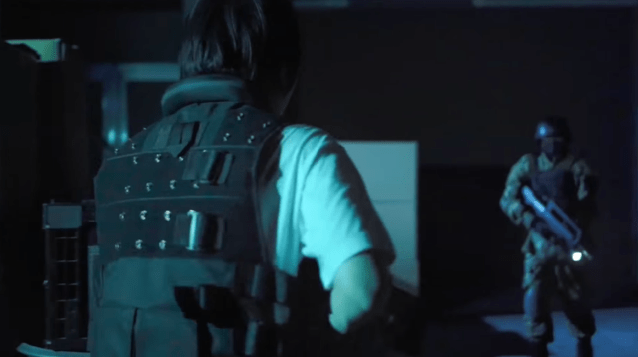
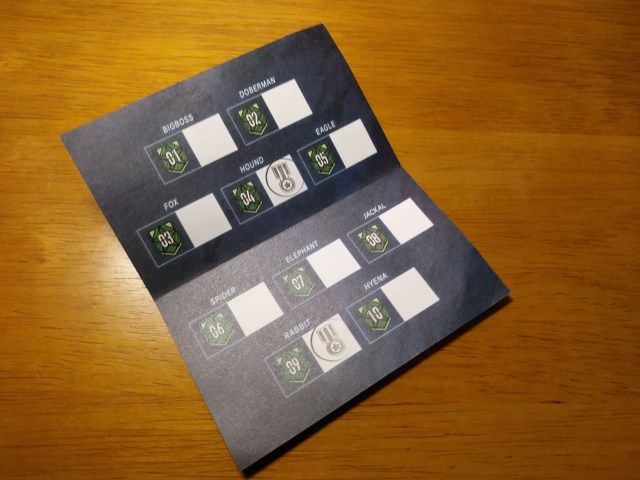
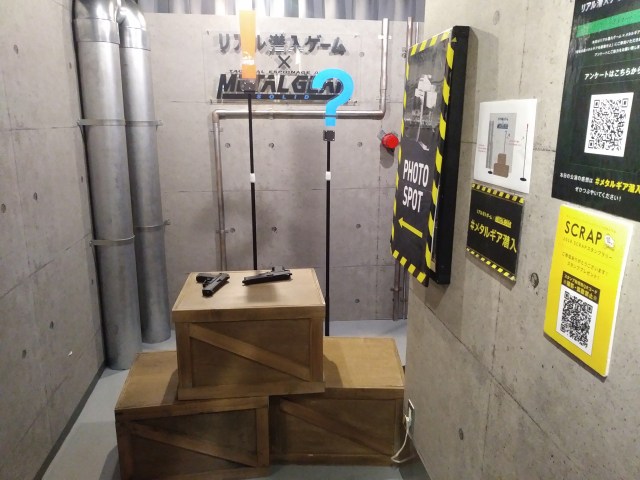
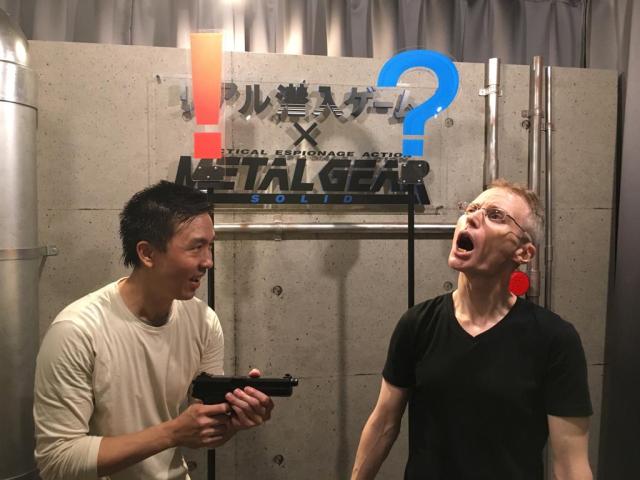
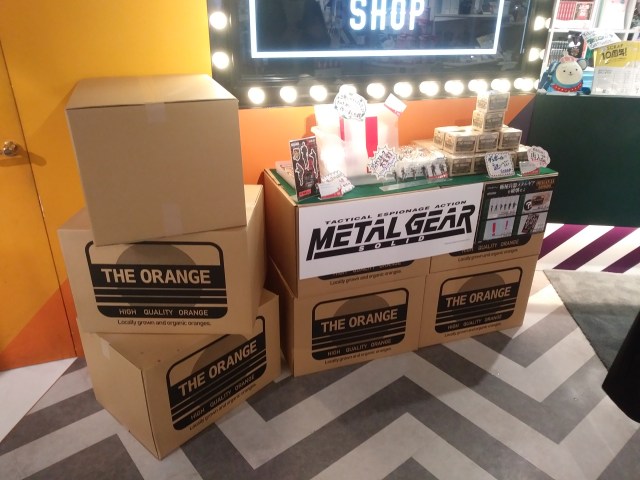
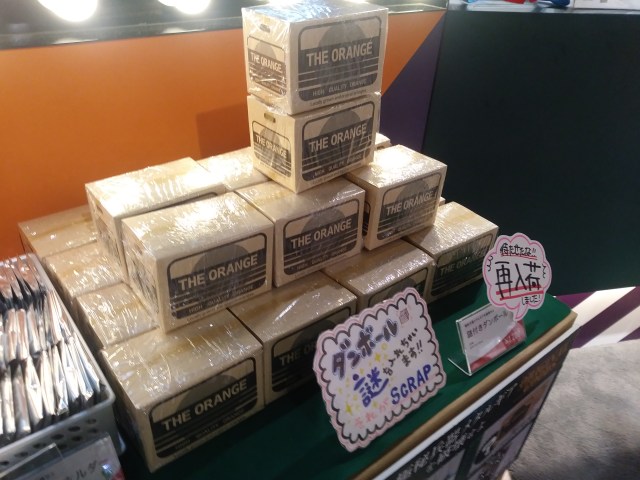

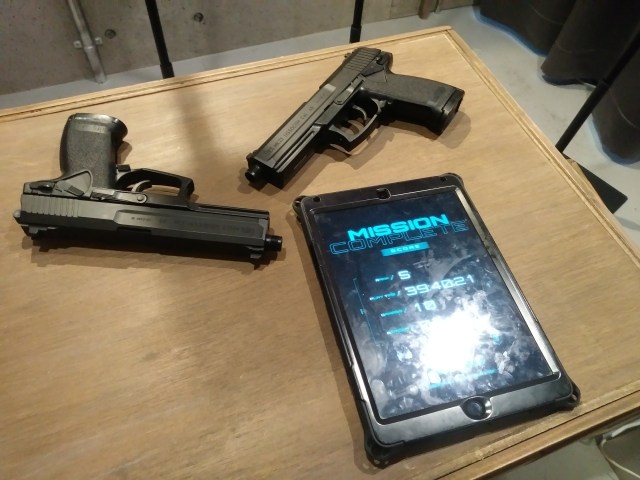
 Metal Gear Solid is now real with awesome “real infiltration game” opening in Tokyo【Video】
Metal Gear Solid is now real with awesome “real infiltration game” opening in Tokyo【Video】 Metal Gear movie finds scriptwriter, presumably prepared to write dialogue including “Snaaake!!!”
Metal Gear movie finds scriptwriter, presumably prepared to write dialogue including “Snaaake!!!” Geoff Keighley: Konami bans Metal Gear Solid V’s Hideo Kojima from game awards
Geoff Keighley: Konami bans Metal Gear Solid V’s Hideo Kojima from game awards Foreigner’s request for help in Tokyo makes us sad for the state of society
Foreigner’s request for help in Tokyo makes us sad for the state of society Japanese city loses residents’ personal data, which was on paper being transported on a windy day
Japanese city loses residents’ personal data, which was on paper being transported on a windy day Ghibli Park now selling “Grilled Frogs” from food cart in Valley of Witches
Ghibli Park now selling “Grilled Frogs” from food cart in Valley of Witches Suntory x Super Mario collaboration creates a clever way to transform into Mario【Videos】
Suntory x Super Mario collaboration creates a clever way to transform into Mario【Videos】 Historical figures get manga makeovers from artists of Spy x Family, My Hero Academia and more
Historical figures get manga makeovers from artists of Spy x Family, My Hero Academia and more Akihabara pop-up shop sells goods made by Japanese prison inmates
Akihabara pop-up shop sells goods made by Japanese prison inmates McDonald’s new Happy Meals offer up cute and practical Sanrio lifestyle goods
McDonald’s new Happy Meals offer up cute and practical Sanrio lifestyle goods Red light district sushi restaurant in Tokyo shows us just how wrong we were about it
Red light district sushi restaurant in Tokyo shows us just how wrong we were about it Harajuku Station’s beautiful old wooden building is set to return, with a new complex around it
Harajuku Station’s beautiful old wooden building is set to return, with a new complex around it What would idol series Love Live! have looked like as a late 1980s anime? Awesome, fan art shows
What would idol series Love Live! have looked like as a late 1980s anime? Awesome, fan art shows Japanese ramen restaurants under pressure from new yen banknotes
Japanese ramen restaurants under pressure from new yen banknotes French Fries Bread in Tokyo’s Shibuya becomes a hit on social media
French Fries Bread in Tokyo’s Shibuya becomes a hit on social media Studio Ghibli releases new action figures featuring Nausicaä of the Valley of the Wind characters
Studio Ghibli releases new action figures featuring Nausicaä of the Valley of the Wind characters New private rooms on Tokaido Shinkansen change the way we travel from Tokyo to Kyoto
New private rooms on Tokaido Shinkansen change the way we travel from Tokyo to Kyoto Tokyo Tsukiji fish market site to be redeveloped with 50,000-seat stadium, hotel, shopping center
Tokyo Tsukiji fish market site to be redeveloped with 50,000-seat stadium, hotel, shopping center All-you-can-drink Starbucks and amazing views part of Tokyo’s new 170 meter-high sky lounge
All-you-can-drink Starbucks and amazing views part of Tokyo’s new 170 meter-high sky lounge Beautiful Ghibli sealing wax kits let you create accessories and elegant letter decorations【Pics】
Beautiful Ghibli sealing wax kits let you create accessories and elegant letter decorations【Pics】 Studio Ghibli releases Kiki’s Delivery Service chocolate cake pouches in Japan
Studio Ghibli releases Kiki’s Delivery Service chocolate cake pouches in Japan New definition of “Japanese whiskey” goes into effect to prevent fakes from fooling overseas buyers
New definition of “Japanese whiskey” goes into effect to prevent fakes from fooling overseas buyers Our Japanese reporter visits Costco in the U.S., finds super American and very Japanese things
Our Japanese reporter visits Costco in the U.S., finds super American and very Japanese things Studio Ghibli unveils Mother’s Day gift set that captures the love in My Neighbour Totoro
Studio Ghibli unveils Mother’s Day gift set that captures the love in My Neighbour Totoro More foreign tourists than ever before in history visited Japan last month
More foreign tourists than ever before in history visited Japan last month New Pokémon cakes let you eat your way through Pikachu and all the Eevee evolutions
New Pokémon cakes let you eat your way through Pikachu and all the Eevee evolutions Sales of Japan’s most convenient train ticket/shopping payment cards suspended indefinitely
Sales of Japan’s most convenient train ticket/shopping payment cards suspended indefinitely Sold-out Studio Ghibli desktop humidifiers are back so Totoro can help you through the dry season
Sold-out Studio Ghibli desktop humidifiers are back so Totoro can help you through the dry season Japanese government to make first change to romanization spelling rules since the 1950s
Japanese government to make first change to romanization spelling rules since the 1950s Ghibli founders Toshio Suzuki and Hayao Miyazaki contribute to Japanese whisky Totoro label design
Ghibli founders Toshio Suzuki and Hayao Miyazaki contribute to Japanese whisky Totoro label design Doraemon found buried at sea as scene from 1993 anime becomes real life【Photos】
Doraemon found buried at sea as scene from 1993 anime becomes real life【Photos】 Tokyo’s most famous Starbucks is closed
Tokyo’s most famous Starbucks is closed One Piece characters’ nationalities revealed, but fans have mixed opinions
One Piece characters’ nationalities revealed, but fans have mixed opinions We asked a Uniqlo employee what four things we should buy and their suggestions didn’t disappoint
We asked a Uniqlo employee what four things we should buy and their suggestions didn’t disappoint Princesses, fruits, and blacksmiths: Study reveals the 30 most unusual family names in Japan
Princesses, fruits, and blacksmiths: Study reveals the 30 most unusual family names in Japan Japanese YouTuber perfects gameplay moves outside Shibuya Station【Video】
Japanese YouTuber perfects gameplay moves outside Shibuya Station【Video】 Where have we heard Metal Gear Solid V’s iDroid voice before? When we last rode the Shinkansen!
Where have we heard Metal Gear Solid V’s iDroid voice before? When we last rode the Shinkansen! Awesome Japanese light gun uses your smartphone to turn real world into huge first-person shooter
Awesome Japanese light gun uses your smartphone to turn real world into huge first-person shooter P.T. easter egg discovered tucked away in Metal Gear Solid V 【Video】
P.T. easter egg discovered tucked away in Metal Gear Solid V 【Video】 Experience the real terror of a giant monster attack with the upcoming Escape From Godzilla Game!
Experience the real terror of a giant monster attack with the upcoming Escape From Godzilla Game! Metal Gear Solid composer talks Konami fall out
Metal Gear Solid composer talks Konami fall out Little Big Planet 3 offers Metal Gear Solid V: The Phantom Pain costumes
Little Big Planet 3 offers Metal Gear Solid V: The Phantom Pain costumes This Metal Gear REX outfit is so huge it needs a team of helpers to be put on 【Video】
This Metal Gear REX outfit is so huge it needs a team of helpers to be put on 【Video】 Get ready to rock! 38 awesome covers of video game music in 17 minutes
Get ready to rock! 38 awesome covers of video game music in 17 minutes This handsome anime-style security guard will be protecting actual homes and offices in Japan
This handsome anime-style security guard will be protecting actual homes and offices in Japan Think you’re a “super player”? Test your gaming habits against this Nintendo relic from the 80s
Think you’re a “super player”? Test your gaming habits against this Nintendo relic from the 80s Here’s how the awesome new Pokémon GO mobile game will look on your smartphone
Here’s how the awesome new Pokémon GO mobile game will look on your smartphone Babymetal’s new album, Metal Resistance, is out now and it’s awesome
Babymetal’s new album, Metal Resistance, is out now and it’s awesome Japanese gamers with “Multiplay Phobia” avoid online play so they won’t cause trouble for others
Japanese gamers with “Multiplay Phobia” avoid online play so they won’t cause trouble for others The Paralympics’ first official video game becomes an entirely new breed of sports game
The Paralympics’ first official video game becomes an entirely new breed of sports game
Leave a Reply